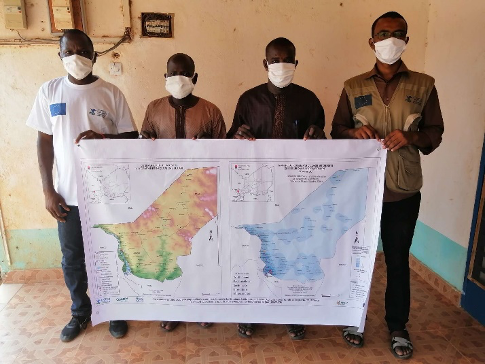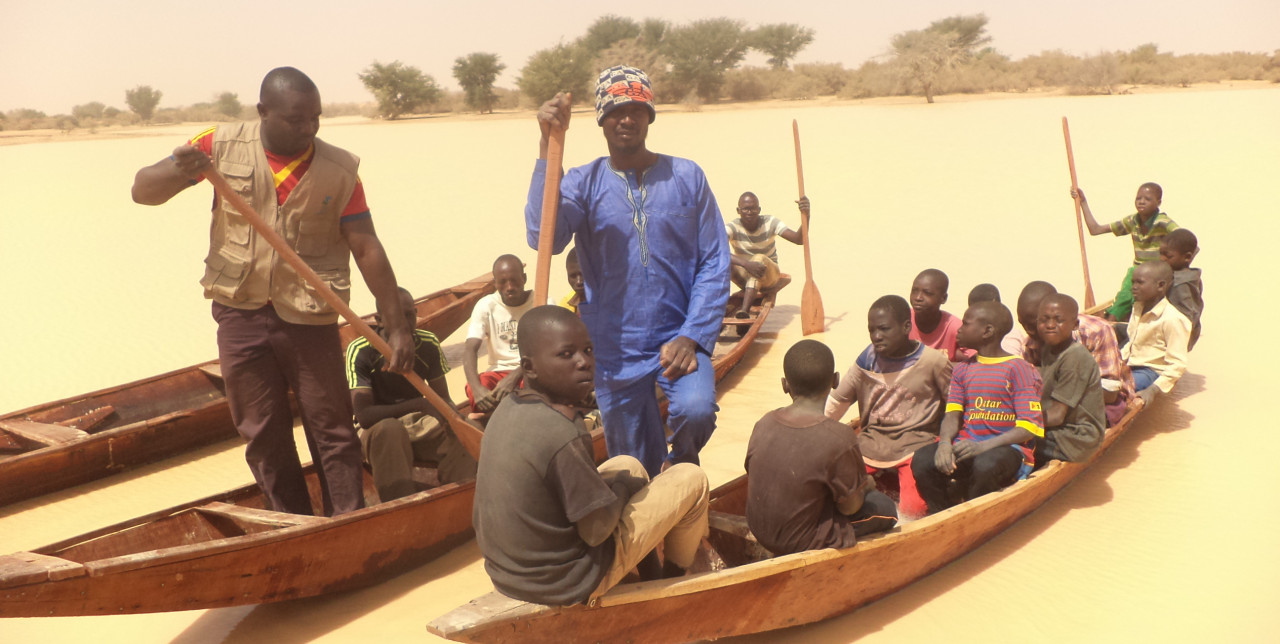28-04-2022 | di COOPI
Niger. Disaster risk reduction through early warning system
Niger, located in the centre of the Sahel region, is confronted with various risks caused by events such as drought, famine, locust invasions, floods, epidemics, political instability and conflict. These risks are sometimes concomitant and have a general impact on food and nutrition insecurity in the country.
In order to respond to this emergency, COOPI - Cooperazione Internazionle has been present in the Tahoua region since June 2020, with the project "Improved response to nutritionale emergencies programme", implemented in consortium with Concern and Action Contre la Faim and financed by the European Commission's Directorate-General for Civil Protection and Humanitarian Aid Operations (ECHO).
In the departments of Tillabéri and Ayorou, COOPI supports the National Directorate for Protection and National Management of Disasters and Food Crises (NDPMDFC) on the component Reducing Risks and Vulnerabilities related to Environmental Disasters. In this framework COOPI, in collaboration with the Crisis Unit and the Early Warning System (EWS) of the DNPGCCA, highlights important challenges, such as the lack of risk analysis, alert thresholds and response at the local level. An important risk analysis has been done at national level by the DNPGCCA with the support of COOPI, but data and analysis are still insufficient at local level (departments, municipalities). In this context, the work carried out by the EWS and the COOPI team aims to help decision-makers to identify risk exposure at the local level and develop risk management strategies adapted to each department in Niger.
Two departmental disaster risk reduction profiles have been produced and validated by the relevant administrative authorities, the regional EWS and the national EWS. These profiles contain the analysis of the context of each department, the results of the risk analyses (priorities, mapping, seasonality, causes, consequences, etc.), the institutional analysis and the plans (EWS Plan, Mitigation and Preparedness Plan and Contingency Plan). The Community System for Early Warning and Emergency Response (CSEW-ER) the Vulnerability Monitoring Observatory (VMO) and the Sub-Regional Committees (SRC) have been strengthened with regard to the practical and participatory analysis of vulnerabilities and risks in the departments of Tillaberi and Ayorou.
In addition, data on market prices and food insecurity as well as risks occurring during the month in the departments of Tillabéri and Ayorou are collected regularly to monitor the evolution of cereal and livestock prices through identified sentinel sites. These data are centralised every month for the drafting of the humanitarian surveillance bulletin. This humanitarian watch bulletin is produced every month and shared with the NDPMDFC and its branches. These bulletins also contain thematic maps based on data on food consumption, livelihoods and survival strategy index. These tools facilitate decision-making and allow actions to be adapted according to local needs.

Creating emergency stocks
Along the emergency analysis and response planning workshops conducted as part of the project, participants discussed the need to create emergency food stocks in the municipalities of Ayorou and Dessa to respond to the immediate needs of displaced populations. Each municipality was therefore provided with twenty tonnes of various food items. This allocation is at the disposal of local early warning structures at municipal and community level and can be mobilised quickly and flexibly. In this way, a timely and rapid food emergency response mechanism is put in place to respond to any shocks that threaten the food and nutrition security of local populations. This municipal emergency stockpiling strategy is part of the emergency response plan contained in the departmental disaster risk reduction profile document and aims at strengthening the endogenous capacities of communities.




 Niger
Niger